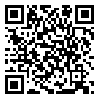BibTeX | RIS | EndNote | Medlars | ProCite | Reference Manager | RefWorks
Send citation to:
URL: http://jdm.tums.ac.ir/article-1-224-en.html
Background and Aim: An important purpose of adhesive dentistry is restriction of cavity preparation to carious dentin removal and conservation of sound dentin. Application of caries disclosing agents and cavity disinfectants can help achieving this goal. The aim of this study was to evaluate the effect of caries disclosing agents and cavity disinfectants on microleakage of composite resin restorations.
Materials and Methods: This experimental in-vitro study was performed on class V cavities in 48 extracted human sound premolars. The teeth were randomly divided into four equal groups. In group 1 caries detector dye (Seek, Ultradent, USA) and in group 2 cavity disinfectant (Consepsis, Ultradent, USA) were applied on dentinal surfaces. In group 3 both mentioned materials were applied. Group 4 was considered as control group. PQ1 bonding agent and Amelogen composite were used to restore the cavities. Gingival microleakage was assessed by dye penetration. Data were analyzed by Kruskall Wallis and Dunn tests. P<0.05 was the level of significance.
Results: Group 2 showed the least and group 4 showed the highest microleakagehowever no statistical significant difference was found among the groups.
Conclusion: The use of caries disclosing agent (Seek) and cavity disinfectant (Consepsis Liquid) did not adversely affect the sealing ability of dentin bonding resins.
Received: 2006/04/30 | Accepted: 2007/04/23 | Published: 2013/08/19
| Rights and Permissions | |
 |
This work is licensed under a Creative Commons Attribution-NonCommercial 4.0 International License. |




